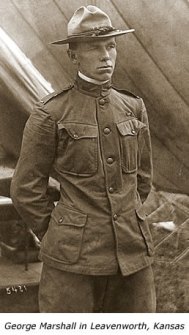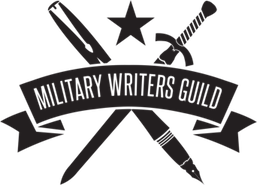The Army takes the education of its soldiers very seriously; so seriously that it developed the term “professional military education,” which it then turned into an acronym, PME. That’s how you can tell that the Army is serious about things: proliferation of acronyms.
But seriously.
Military Education
Military education is incredibly important – it sets the professional apart from the warrior. It recognizes that there is an art and science to leadership that is worth spending time to read, digest, and discuss. It shapes and builds leaders, imbuing in them a sense of organizational pride and culture. It ensures that we have an overarching concept or theory of how we make war and the lessons for practicing it, which is what we call doctrine. And it takes that doctrine, applies it to ongoing operations, compares it to past operations, and develops sets of lessons learned to further improve the base doctrine. In essence, it is the embodiment of the profession with a set of core disciplines or values but which is always changing and adapting how those disciplines are put into action.
All military education must stem from the fundamental understanding that war is a human endeavor, and as such cannot be prosecuted without understanding basic factors of humanity. It is through the constant study and exchange of ideas – in an environment where students may be free to think outside the box – that military education can go from being a theoretical exercise to an applied art. After all, all this study is useless if it is never digested and applied in real life.
Education cannot be conducted in a vacuum; it consists of give and take between students and instructors. It does not consist of strict rules but rather of ways of thinking about problems – whether they be about maneuver, engineering, application of fires, or sustainment. Problem solving engages the student’s brain rather than letting it be a passive receptor of information. To put it simply, it shouldn’t be an information dump, or “drinking through a firehose,” but instead a measured, disciplined intellectual challenge.
Historical Background
The Army recognized this in the early 1900s. We had just come out of the Spanish-American War of 1898 where we had beaten up a very weak Spain and come away with a big ol’ “W” to add to our list of wins and losses. The problem was that the Army’s performance in that war left a lot to be desired. For the first time, we were fighting a war on multiple fronts: Cuba, Puerto Rico, and the Philippines. The geography and climate almost defeated us, as did disease. The Army was a hodge-podge of Regular and Volunteer outfits, all with varying levels of combat proficiency and different ways of doing business. The Army’s logistics corps was stretched to near breaking point. So too was the signal corps, which relied on dozens of Volunteer signal companies because there weren’t enough trained operators in the Regular Army. The acquisitions process was so broken that the most of the U.S. infantry units still using black powder rather than smokeless powder. Facing an actual peer force bent on defeating us, we might have not walked away with an easy win – or perhaps no win at all.

In 1899, Elihu Root became the Secretary of War. Despite his comical first name, Root became one of the most influential men to ever hold that position. Over his tenure (1899-1904), Root began instituting reforms meant to make the Army a profession across the board. He established a general staff headed by the Army Chief of Staff in 1903 which was meant to establish a clear command structure for the force. This overcame the byzantine-like bureau chief structure that had plagued the Army for decades. Incidentally, Root made few friends in the general officer corps because of his reforms.
Root also introduced reforms to the Organized Militia, completing their transition to the National Guard of the Army in 1903. This standardized the Army’s reserve force with similar training and equipping as their Regular counterparts. Lastly – and probably most importantly – Root spearheaded the creation of a number of different military schools to provide – you guessed it – professional military education. The chief of these was the Army War College. In just four years, Root managed to drag the Army out of the 18th century (most Army protocol went back to the 1790s) and into the 20th.
Subsequent innovations followed, as the National Guard eventually was brought entirely into the fold in 1916, authorized the same pay, training, equipping, and education as the Regular Army. As part of this, National Guard officers and noncommissioned officers began to receive PME, sometimes through distance learning and sometimes through residence courses with their Regular Army peers. The Root Reforms were nearly complete, just in time for World War I. The Army demonstrated in this war that it had the capability of fighting a massive and protracted conflict. There were growing pains, yes, but nothing as shameful as the Spanish-American War had been.
 These were the roots – no pun intended – of professionalism in the U.S. Army. Those roots were fertilized in the interwar period, when the budget-constrained Army made up for lack of numbers by creating one of the most educated and adaptive forces in the world. Under the oversight of George C. Marshall, the Army built a doctrine and a core of leaders that would see it through some very dark times in 1941-43 and eventually take it to victory in 1944-45. Much of this was due to Marshall’s emphasis on PME, especially in obtaining schooling for promising officers whose low rank often hindered their ability to attend more advanced schooling.
These were the roots – no pun intended – of professionalism in the U.S. Army. Those roots were fertilized in the interwar period, when the budget-constrained Army made up for lack of numbers by creating one of the most educated and adaptive forces in the world. Under the oversight of George C. Marshall, the Army built a doctrine and a core of leaders that would see it through some very dark times in 1941-43 and eventually take it to victory in 1944-45. Much of this was due to Marshall’s emphasis on PME, especially in obtaining schooling for promising officers whose low rank often hindered their ability to attend more advanced schooling.
Training rather than Education
Now in all of this, education shouldn’t be confused with training. Training is teaching soldiers how to do their jobs. It teaches the infantry to shoot, move, and communicate, the engineer to breach, build, and bridge, and civil affairs to…do whatever it is that civil affairs does, no one is really sure. Training is where memorization and rote practices come into play, because muscle memory is crucial in many aspects of our jobs. Training is vitally important, but it is not education.
Which brings us to the present day.
Both enlisted and officer personnel have to go through different educational “gates” before they can progress to the next level in their careers. And gate is perhaps the best analogy, because that is what PME has become. It is no longer – if it ever was – about teachers leading students through a hall of learning, exciting them to be critical thinkers and perpetual seekers after truth, and then setting them on their way better intellectually prepared to be a leader. No, it is now the dreaded “box check,” just another requirement on the way through the ranks.
Education has become training, where students are tossed field manuals and technical manuals full of “how to” information, told to ingest it, regurgitate it for an exam, flush, and repeat. Courses are designed in such a way as to merely check off the completion of requirements rather than to engage the student in an educational process. In fact, engagement is often viewed as a byproduct, while the chief goal of the course is to graduate. There’s an Army saying that goes, “train to standard not to time.” Our PME is training to time, not to standard. It produces officers that are technically and tactically proficient but that are not professionally engaged with the force at large.
In order to return the P and E to our PME, we need to reorient our expectation of the output: an educated professional rather than a trained individual.
What can be done? For starters, invest in instructors rather than using Army officer peers or retired military personnel to instruct the courses. Secondly, change the curriculum to reflect a change of output. Third, change the structure; make training courses be training courses and PME actually a time to be educated. Lastly, do away with distance learning courses. They quickly become a farce, just ask any enlisted soldier. Obviously, there is far more to be done, but these few steps would begin to make a long-needed change.
Enjoy what you just read? Please share on social media or email utilizing the buttons below.
About the Author: Angry Staff Officer is an Army engineer officer who is adrift in a sea of doctrine and staff operations and uses writing as a means to retain his sanity. He also collaborates on a podcast with Adin Dobkin entitled War Stories, which examines key moments in the history of warfare.




This education problem is endemic to society at large, not just the military. Also it’s not going to be corrected while we have parade generals. No change is going to take place until we surfer a major defeat/embarrassment and big reforms in the military take place.
I served in the Army for a spell and left, its hopelessly beaurocratic.
LikeLiked by 1 person
When I was in the Navy, I was an AX filling an AT billet–both avionics, but different applications thereof. When I took an advancement test, I re-memorized the arcane lore of sonobuoys & MAD booms for the test, then forgot most of it for 6 months, as it had nothing to do with maintaining & running a VAST test bench. AQs in AT billets had to do the same thing, relearning fire-control minutiae long enough to test on it.
Shortly before my discharge, the USN combined AT (aviation electronics technician), AQ (aviation fire control technician) and AX (aviation antisubmarine warfare technician) into 2 AT ratings, for ops & intermediate level. I don’t know what that did to the tests; I knew I was leaving that branch, & didn’t bother taking the last one, as I would have been discharged before the results arrived. I do know that the testing was useless as a tool for evaluating my competence in my assigned duties. I can only hope things have improved, although I confess that I’m not sanguine about that.
LikeLike
Yes, the Army PME system is broken. Just witness the endless stream of O4s leaving CGSC who arrive at a BCT looking to “create systems to get ahead of the planning curve” by “implementing multifunction planning teams” requiring a representative from EVERY staff section to carry an OPORD from WARNO to FRAGO. That process is a complete waste of time for everyone but three people involved, the S2, S3, and S4 planners. Rather than teaching people to be efficient and good middle management, they teach them to implement the most inefficient and least productive time management techniques, after all, the Major holding the “sync meeting” is literally the only one who gets any situational awareness out of it.
LikeLiked by 1 person